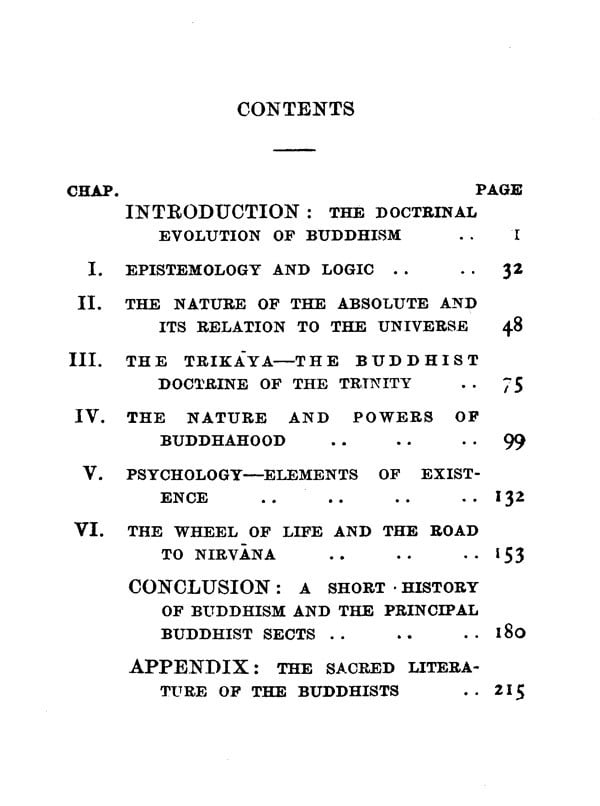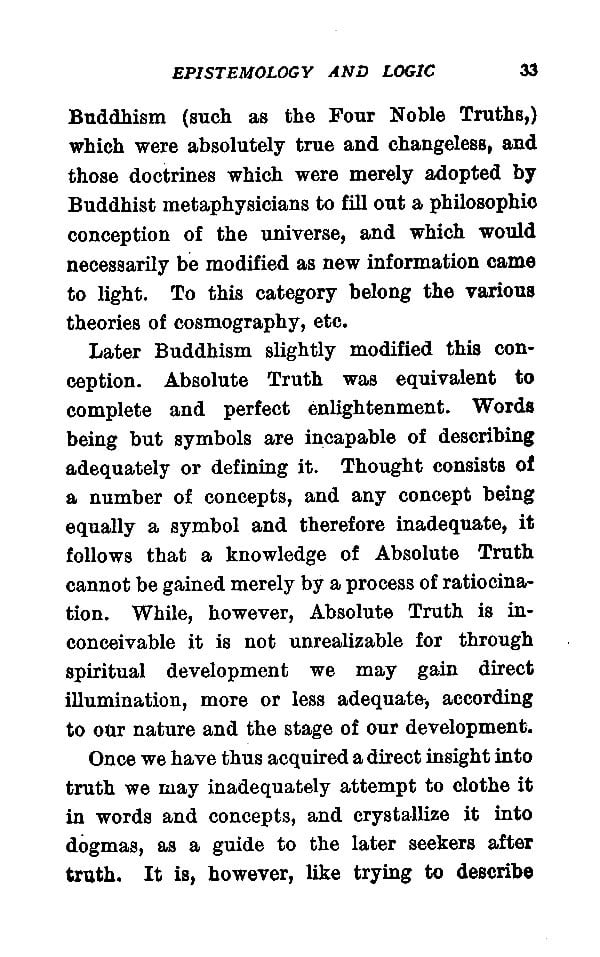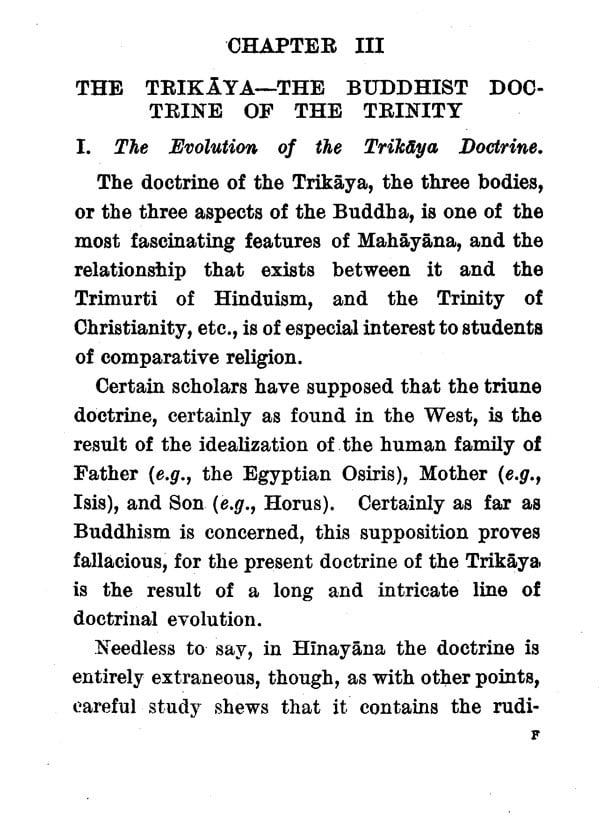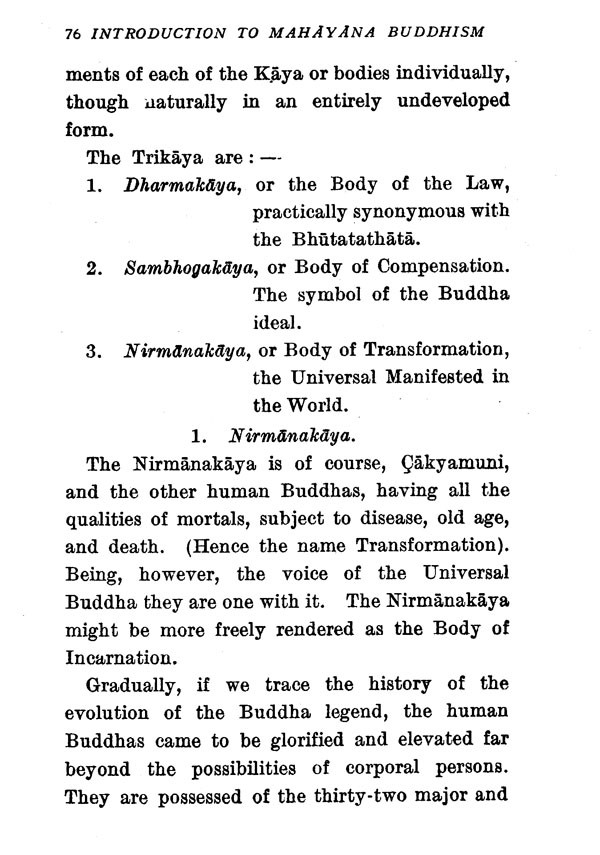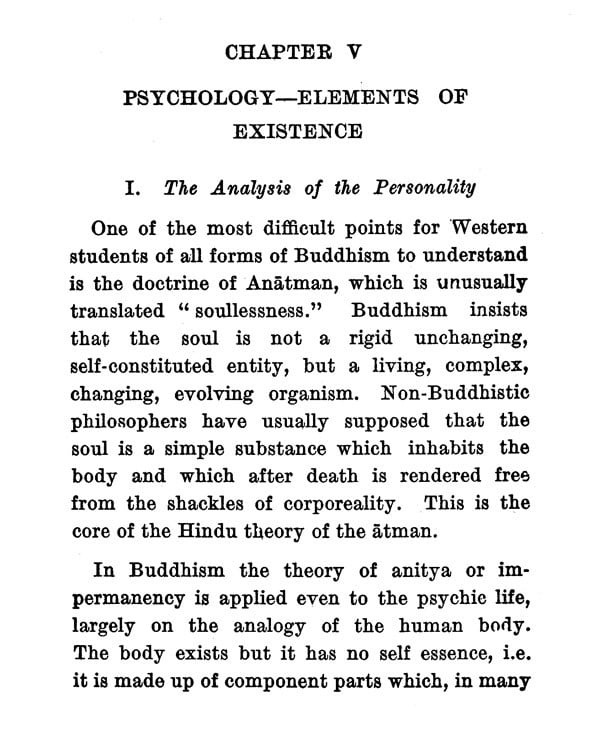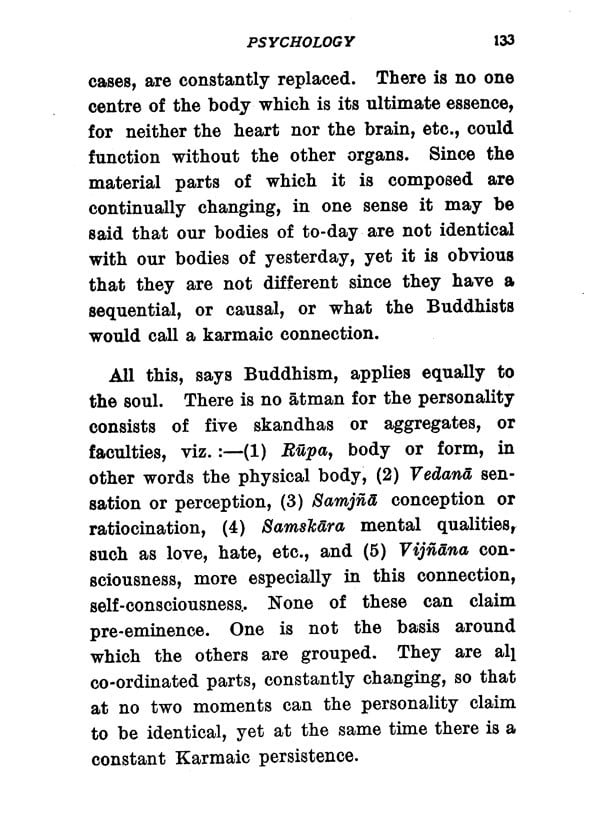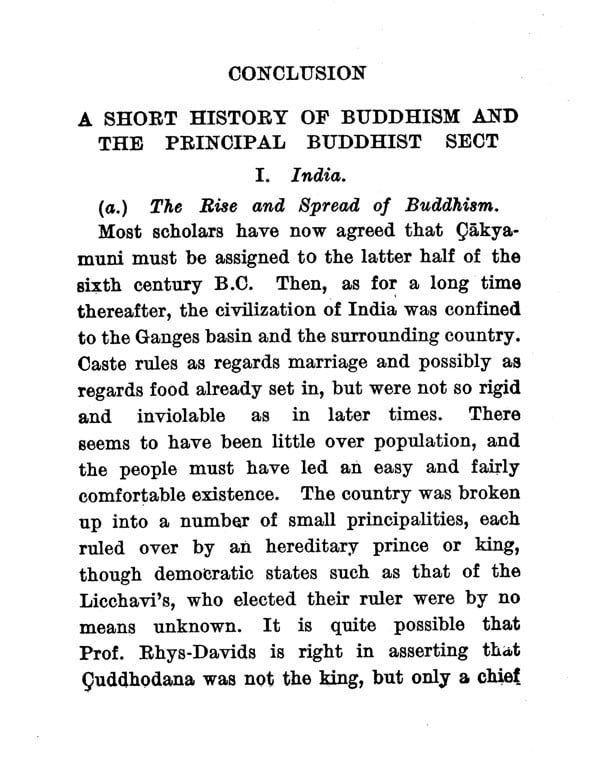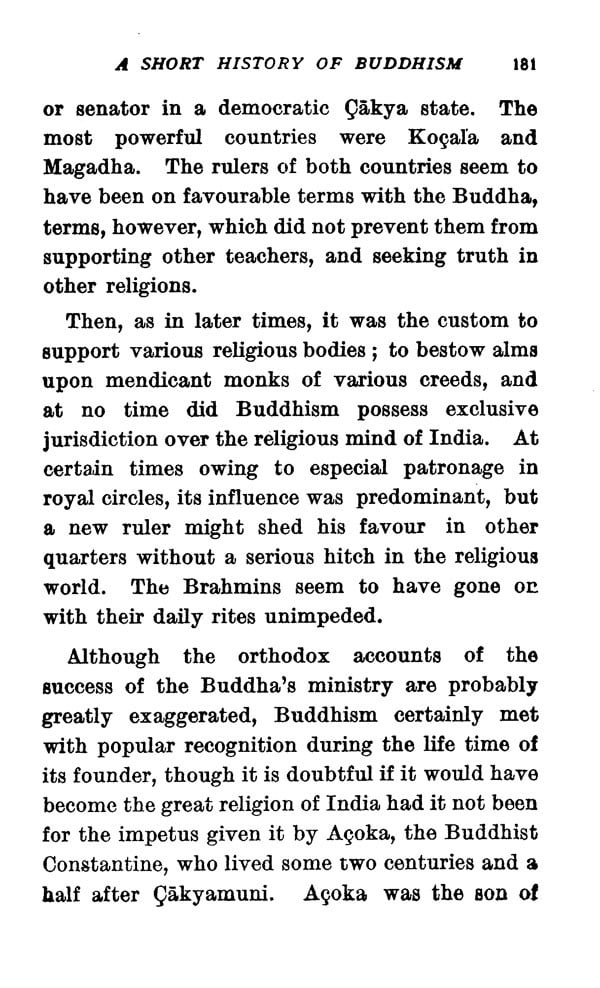
An Introduction Mahayana Buddhism
Book Specification
| Item Code: | NBZ533 |
| Author: | William Montgomery McGovern |
| Publisher: | MUNSHIRAM MANOHARLAL PUBLISHERS PVT LTD |
| Language: | English |
| Edition: | 2013 |
| ISBN: | 9788121507660 |
| Pages: | 238 |
| Cover: | HARDCOVER |
| Other Details | 9.00 X 5.50 inch |
| Weight | 400 gm |
Book Description
Buddhism is divided into two great schools, Mahayana and Hinayana. Both systems originated in India, but since the former predominates in China, Japan, Nepal and in a modified form, in Tibet and Mongolia, while the latter is confined almost exclusively to Ceylon, Burma, and Siam; they are often and rather incorrectly known as Northern and Southern Buddhism.
Mahayana is again divided into unreformed and reformed branches, the unreformed branch being found all over Eastern Asia, while the reformed branch has its centre in Japan. Roughly, we may compare these divisions of Buddhism to those of the principal Occidental faiths. Hinayana, or the earlier and more primitive form of Buddhism, corresponds to Judaism; Unreformed Mahayana to Catholicism, and Reformed Mahayana to Protestantism.
Present work puts forth the essentials of Mahayana philosophy, in a simple form, and presents a historical outline of the origin and development of Mahayanic ideas and practices.
Buddhism is divided into two great schools, Mahayana and Hinayana. Both systems originated in India, but since the former predominates in China, Japan, Nepal, and, in a modified form, in Tibet and Mongolia, while the latter is confined almost exclusively to Ceylon, Burma, and Siam, they are often, and rather incorrectly, known as Northern and Southern Buddhism.
Mahayana is again divided into unreformed and reformed branches, the unreformed branch being found all over Eastern Asia, while the reformed branch has its centre in Japan. Roughly, we may compare these divisions of Buddhism to those of the principal Occidental faiths. Hinayana, or the earlier and more primitive form of Buddhism, corresponds to Judaism ; Unreformed Mahayana to Catholicism, and Reformed Mahayana to Protestantism.
Of recent years, owing to the labours of such scholars as Spence Hardy, Gogerly, Prof. and Mrs. Rhys-Davids, etc., Hinayana has become more or less known to the Western world, but Mahayana still awaits adequate treatment. Different scholars in dealing with Mahayana have spoken of it as a ritualistic and animistic degeneration of Hinayana ; as sophistic nihilism, as mystic pantheism. They have claimed it to be now monotheistic, now polytheistic, now atheistic ; or finally, they have contented themselves with stating that it is a vast mass of contradictory ideas, unassimilated and undefined.
It is obvious that all of these descriptions can not be true, while the historical importance of the Mahayana philosophy renders it imperative to attempt some more concise interpretation of its essential elements, for as Christians far outnumber Jews, so do Mahayanists far outnumber Hinayanists ; as Christianity has had far more important cultural connections than Judaism, so has Mahayana, at the expense of Hinayana, ineffaceably linked itself with the civilizations of vast parts of Asia ; and as the early fathers of the Christian Church and the schoolmen of the Middle Ages built up a religious and philosophic system far more important than the ideas expressed in Rabbinic schools, so is Mahayana the outcome of centuries of speculative development, enriched by materials from all sources, and expounded by the great bulk of the ancient metaphysicians of India and China, while Hinayana has remained far more narrow and confined in its philosophic evolution.
Indian Thought at the Time of the Buddha.
Any adequate understanding of Mahayana must be based upon a comprehension of the stages of its development, of the processes by which it differentiated itself from the more primitive Hinayana, of the relation of the latter to pristine Buddhism, and of the place of this pristine Buddhism in Indian thought.
The period in which Gautama or Cakyamuni, the historical founder of Buddhism, lived (some five and a half centuries B.C.) was in many ways an interesting one. The earlier child-like beliefs of the Vedas had dwindled, and the implicit acceptance of the primeval deities had given way, at least among the educated classes, to a keen discussion, from a mystico-rationalist point of view of the essential problems of existence. It was the age of the formulation of metaphysical systems. Bands of mendicant teachers went forth proclaiming new syntheses of knowledge, new outlooks on life.
**Contents and Sample Pages**
